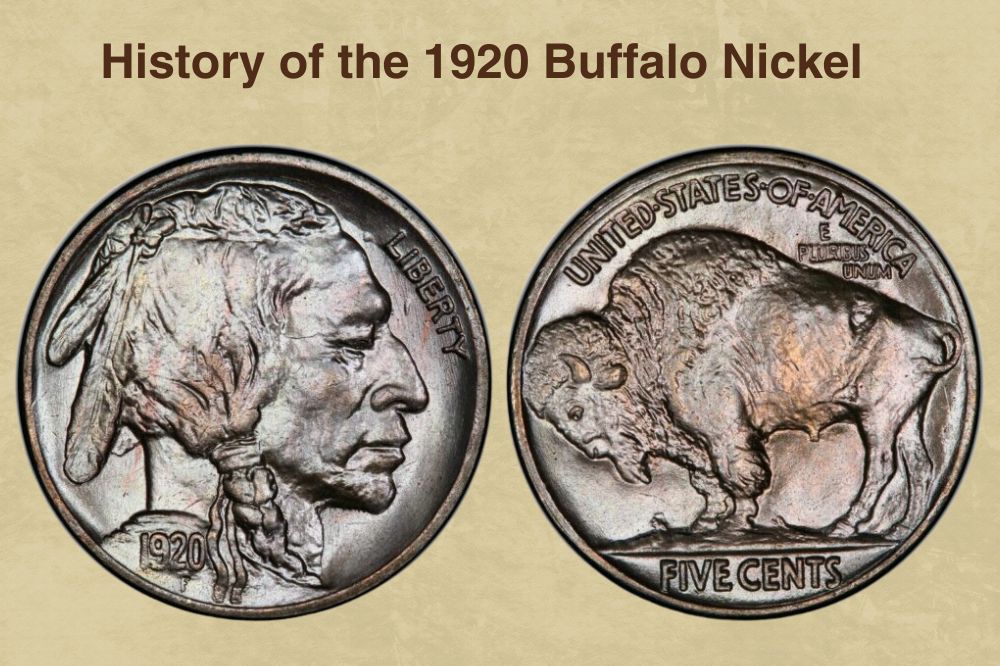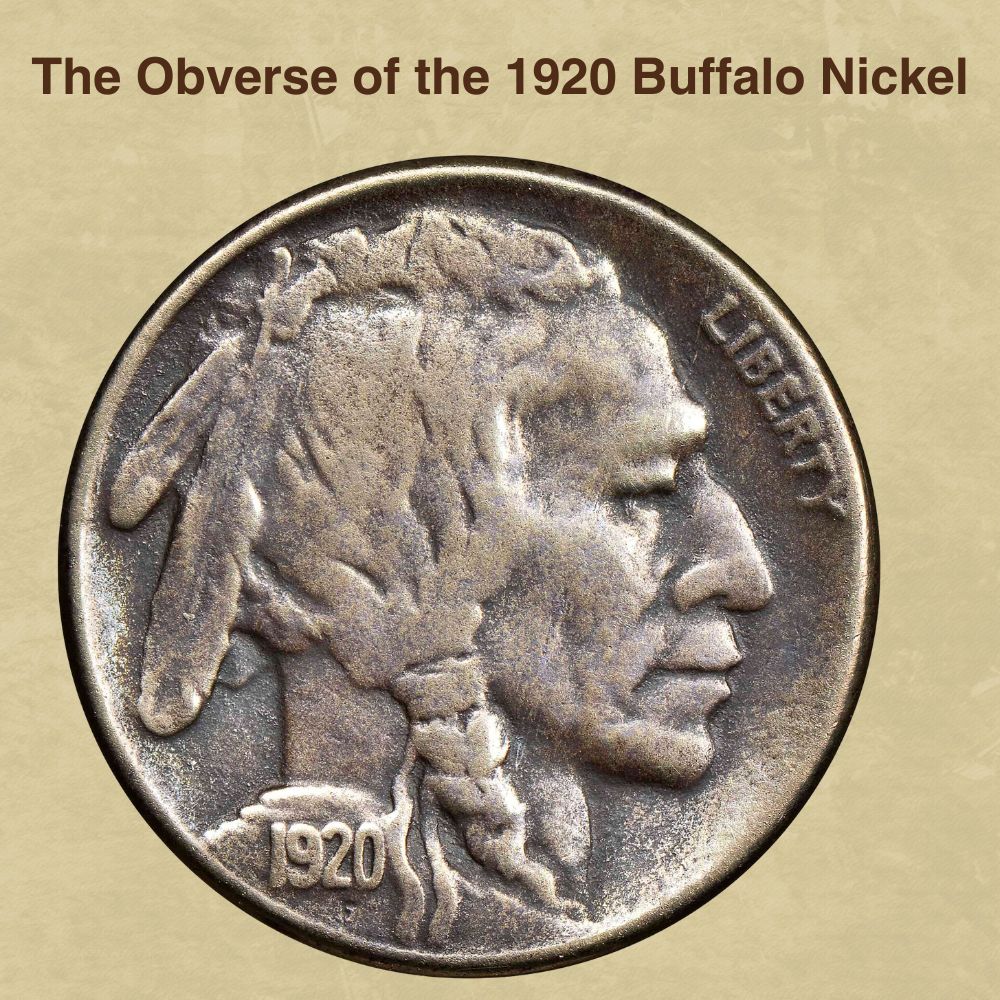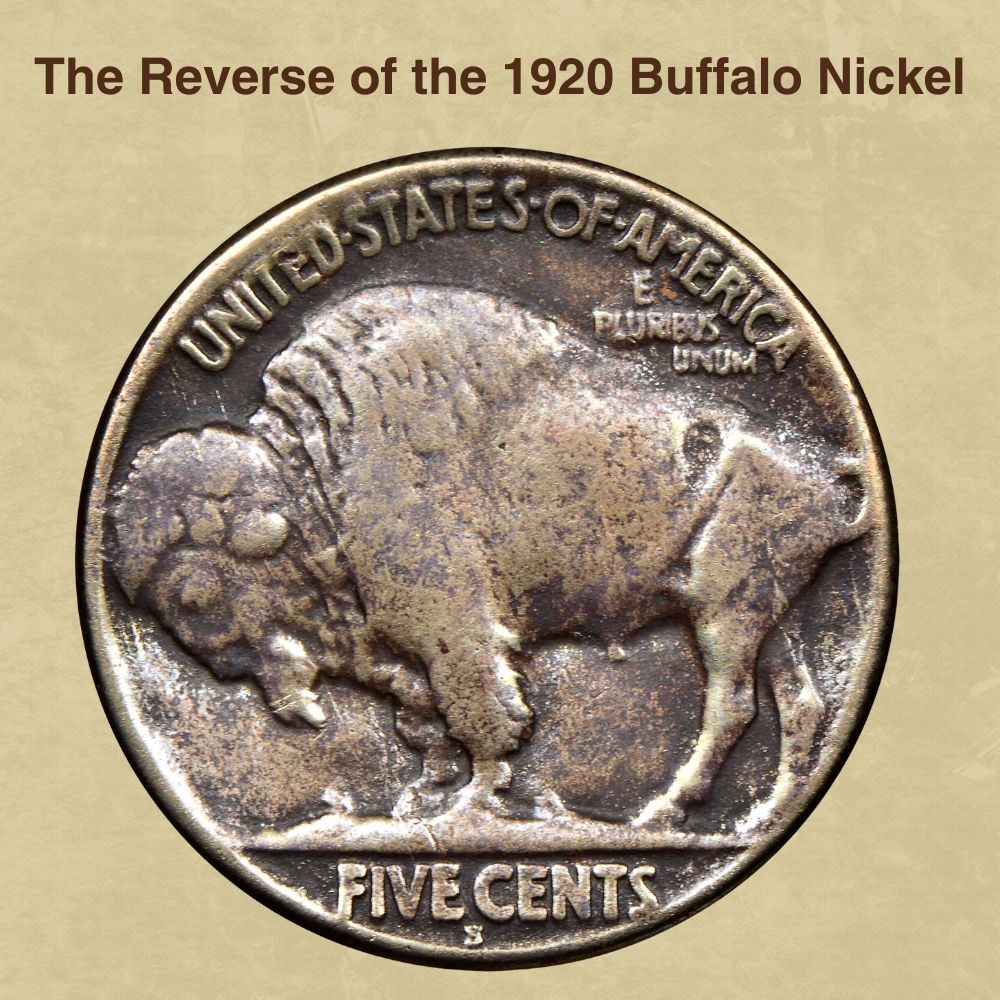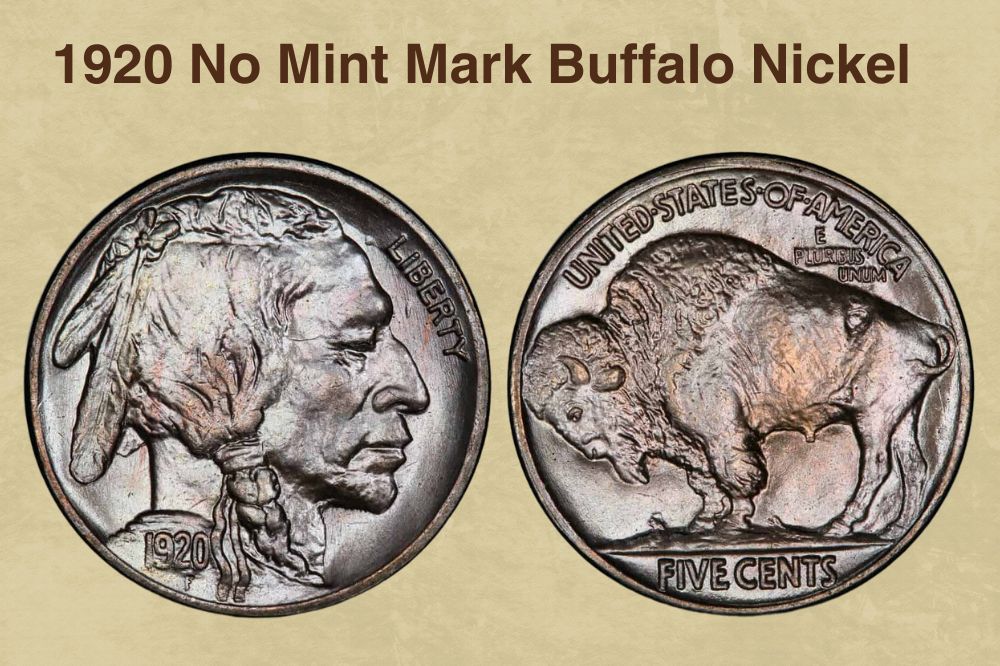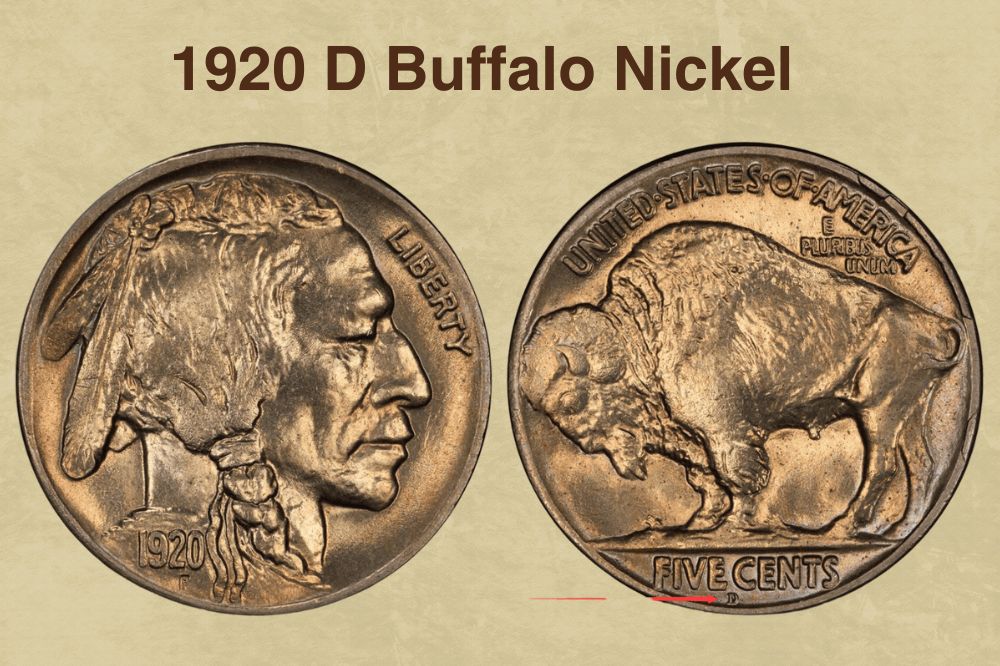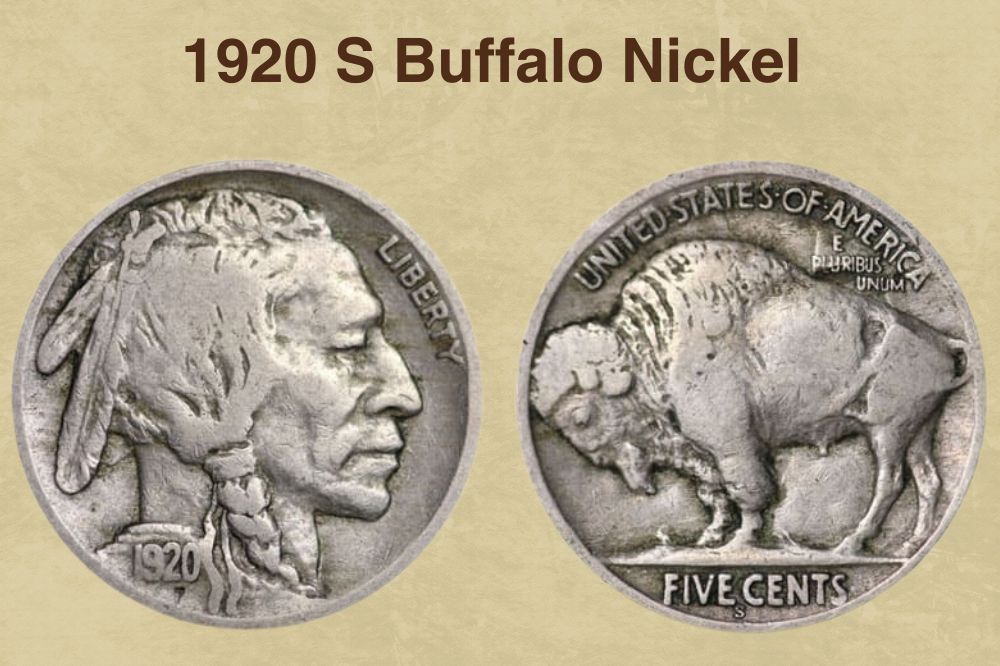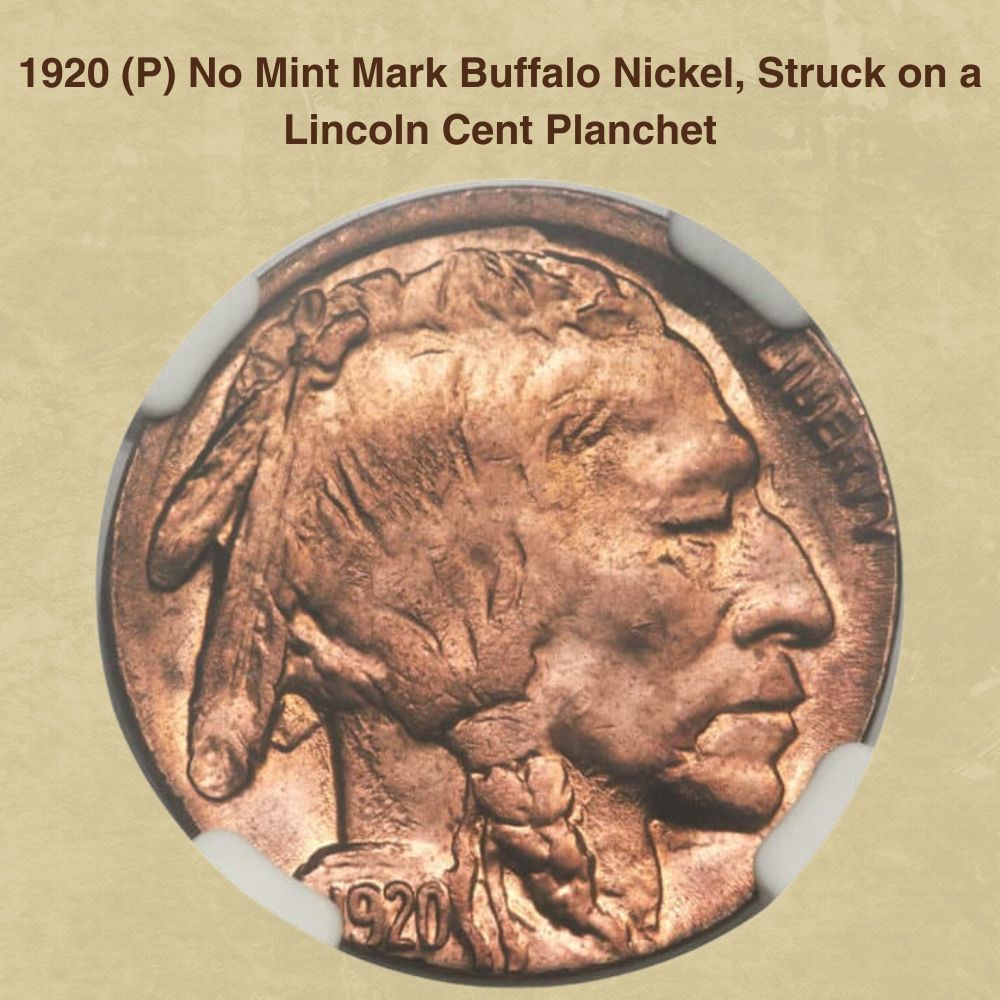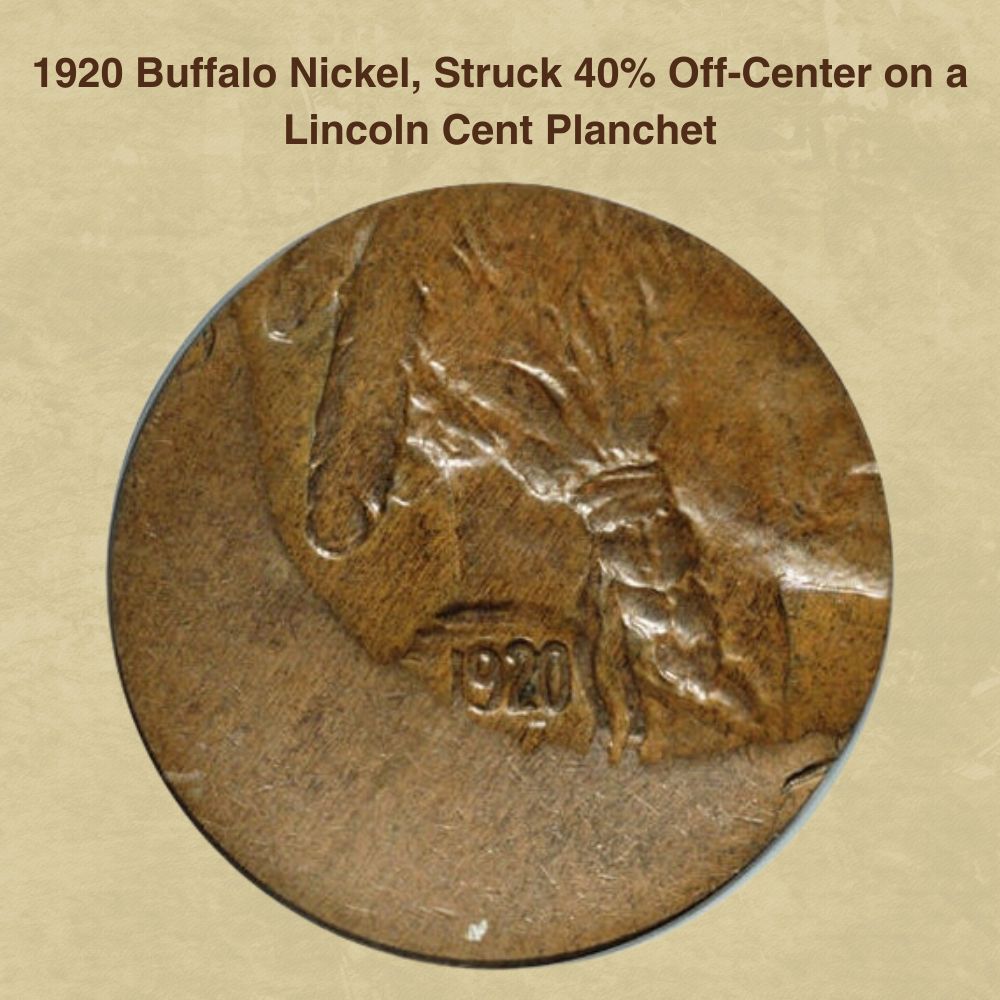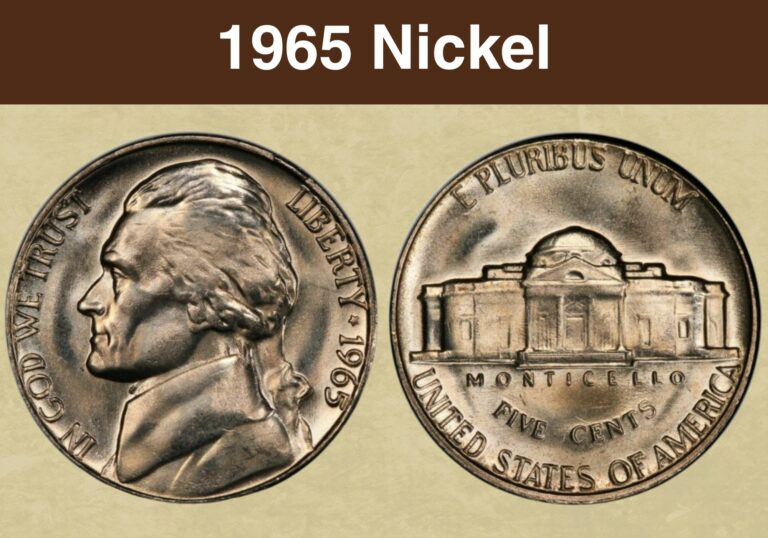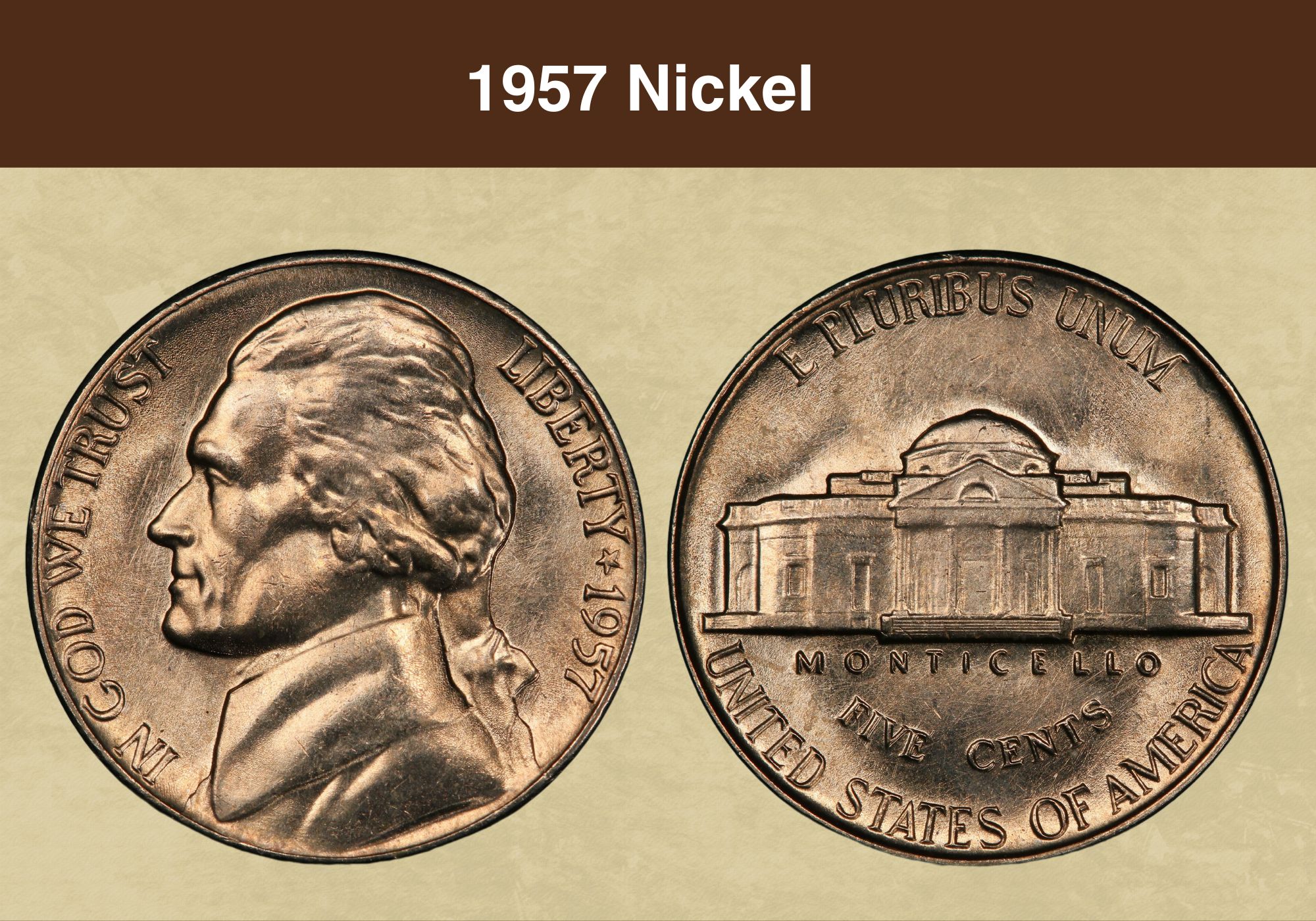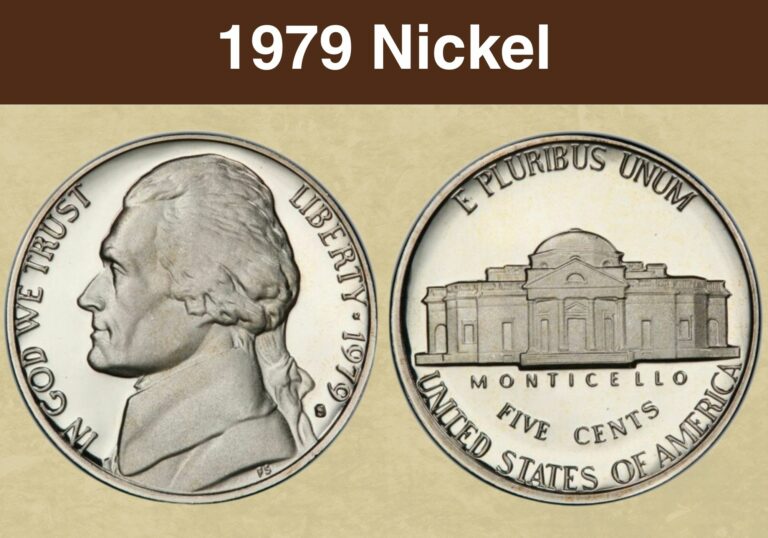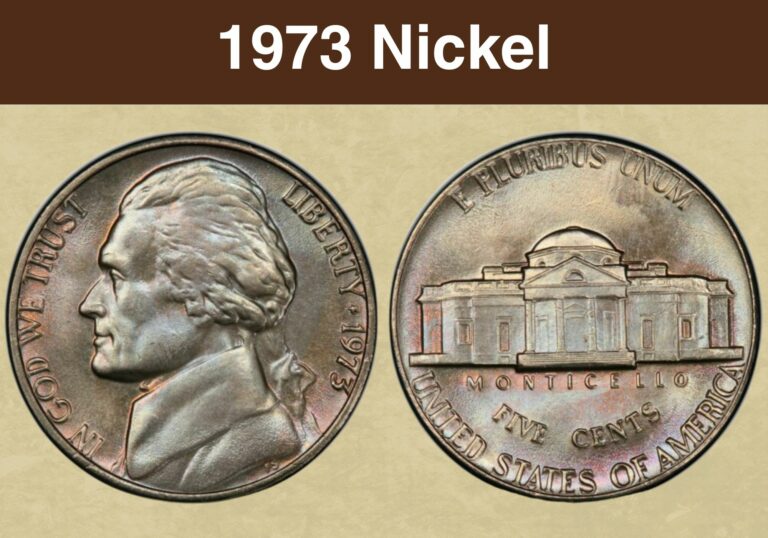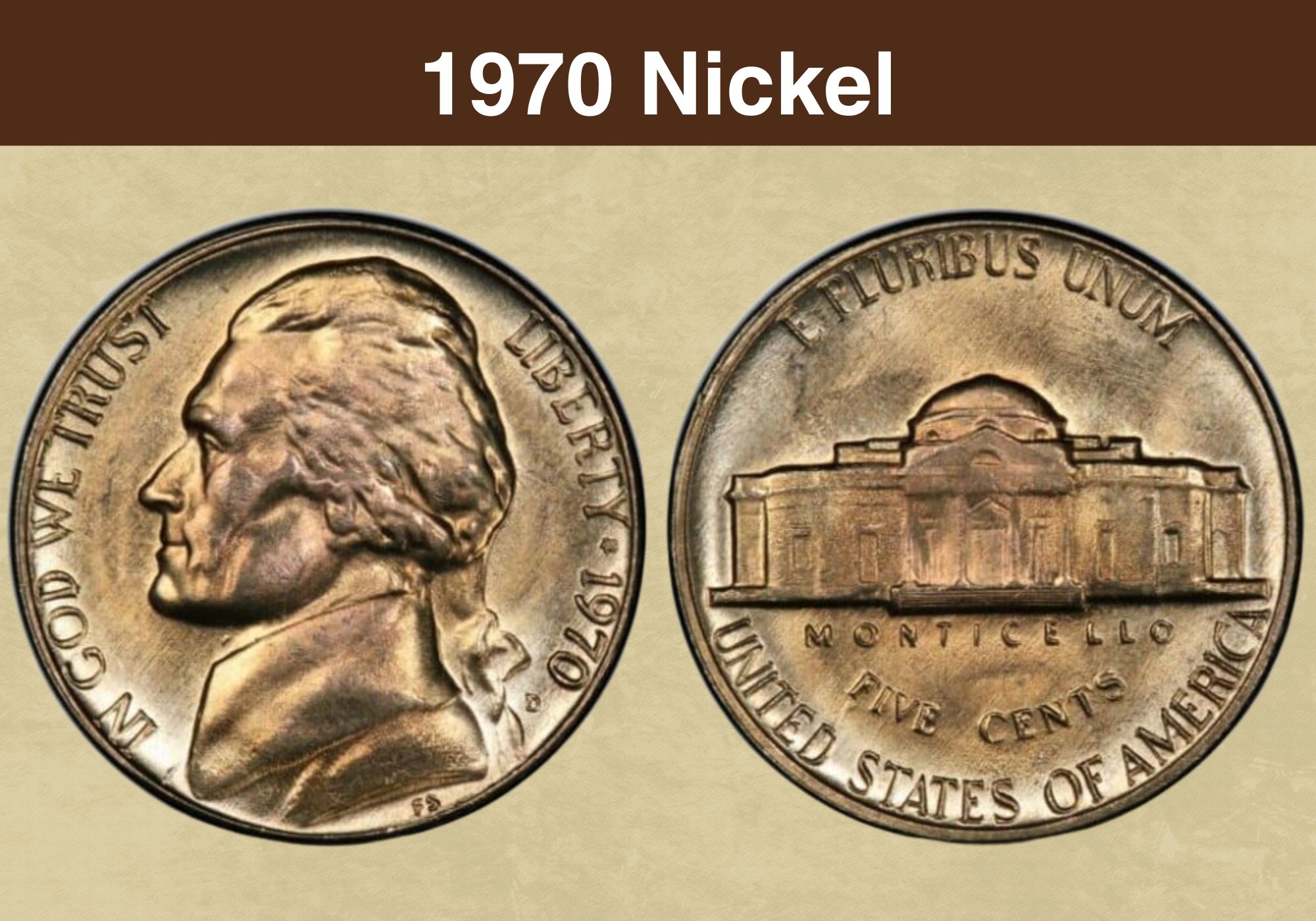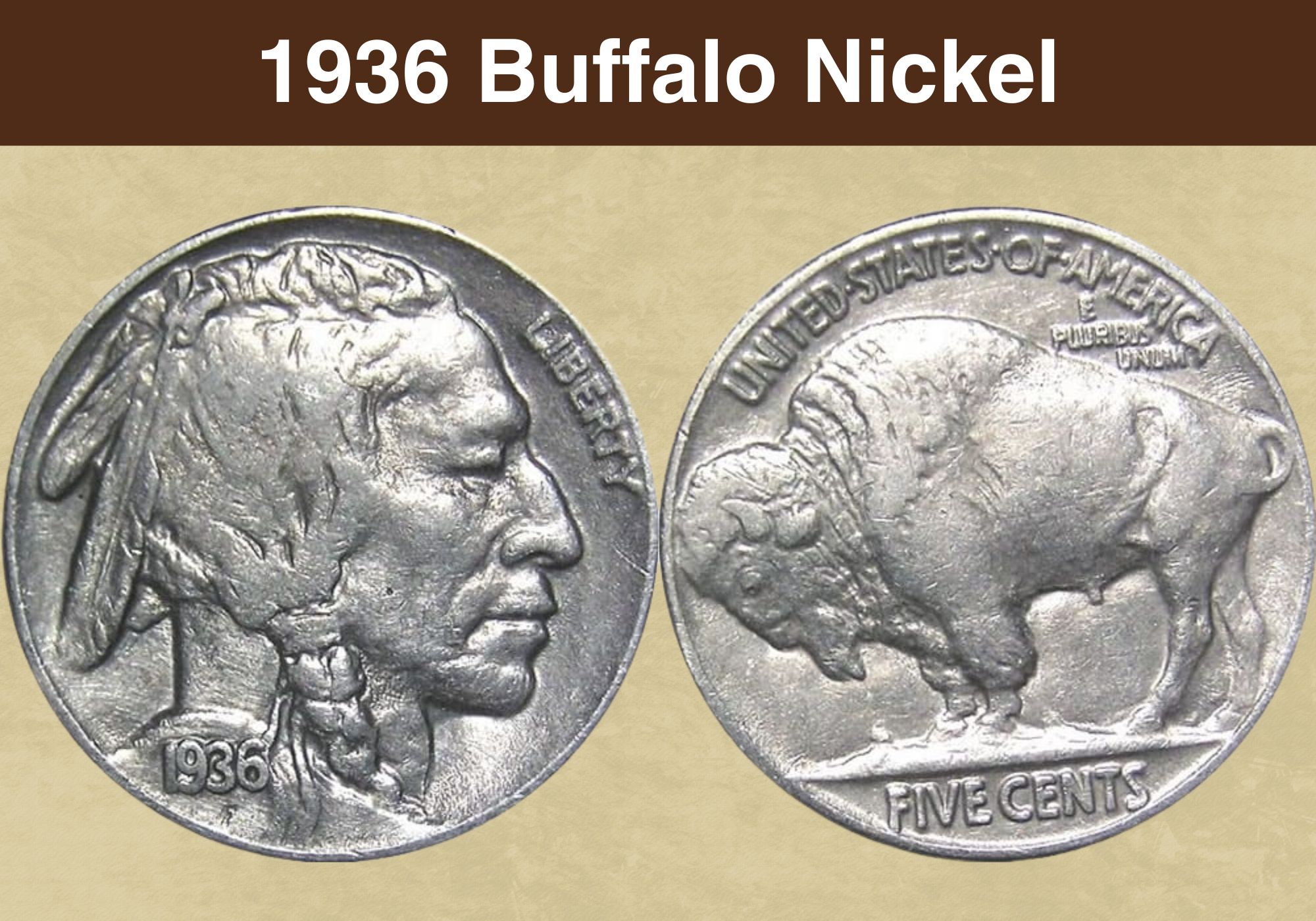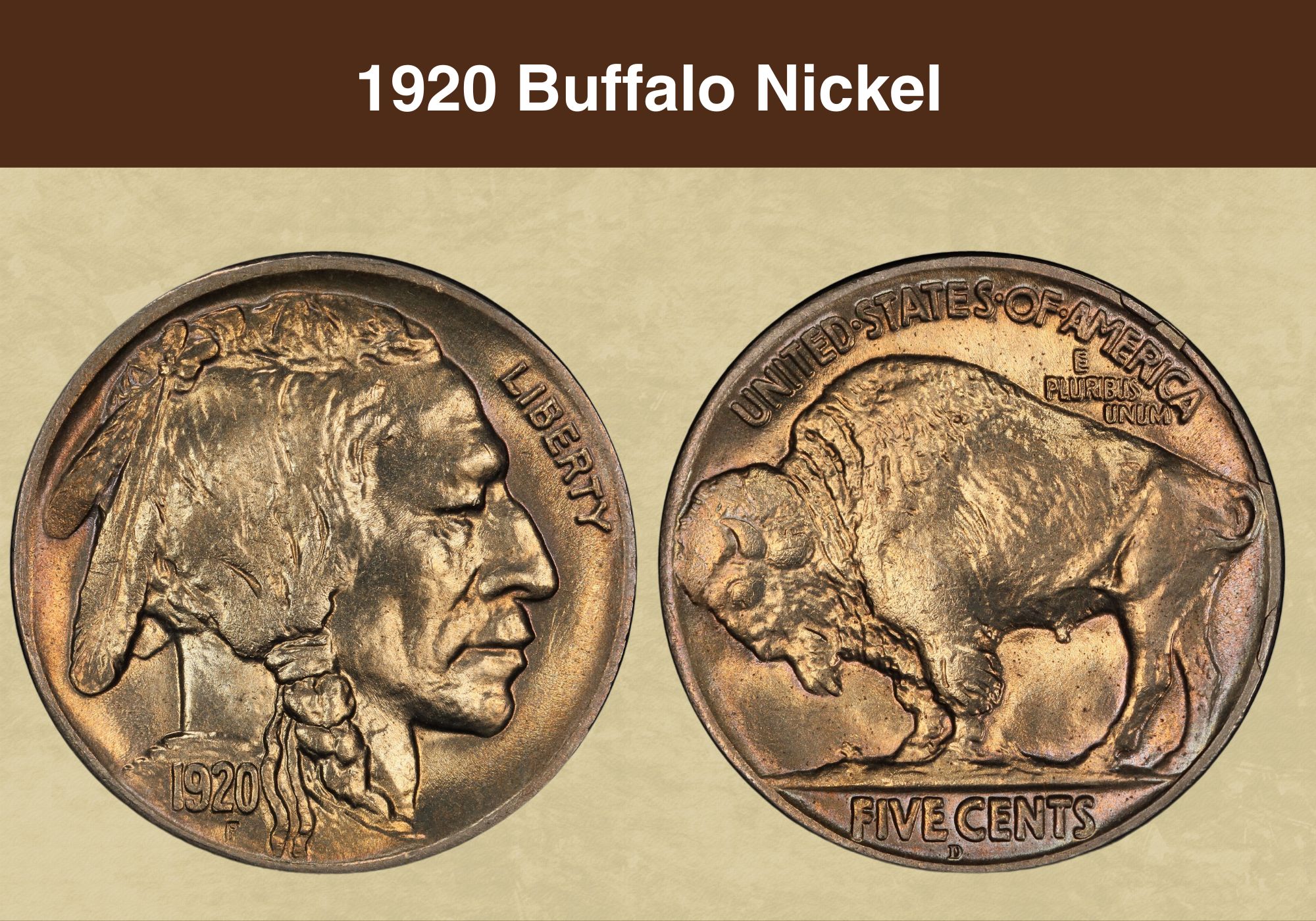
Coin Value Contents Table
- 1920 Buffalo Nickel Value Chart
- History of the 1920 Buffalo Nickel
- Features of the 1920 Buffalo Nickel
- 1920 Buffalo Nickel Grading Guides
- 1920 Buffalo Nickel Value Guides
- 1920 No Mint Mark Buffalo Nickel Value
- 1920 D Buffalo Nickel Value
- 1920 S Buffalo Nickel Value
- Rare 1920 Buffalo Nickel Errors List
- Where to Sell Your 1920 Buffalo Nickel ?
- FAQs
The nickel struck in 1920 was one of the most distinctive of American coins. It’s known as the Buffalo nickel. And some examples can be very valuable.
We’re going to find out more about the 1920 Buffalo nickel value. We’ll discover what separates a standard coin from something special. And we’ll check out some of the interesting Mint errors that add a premium to prices.
So if you’re ready to learn more about this interesting coin, let’s get started!
1920 Buffalo Nickel Value Chart |
||||
| Mint Mark | XF45 | MS60 | MS65 | MS67 |
| 1920 No Mint Mark Buffalo Nickel Value | $25 | $80 | $650 | $6,250 |
| 1920 D Buffalo Nickel Value | $360 | $900 | $5,500 | $100,000 |
| 1920 S Buffalo Nickel Value | $300 | $975 | $14,500 | n/a |
History of the 1920 Buffalo Nickel
The coins known as Buffalo nickels were first produced in 1913. They get their nickname from the image on the reverse, although it’s actually a misnomer. The animal shown on the “tails side” isn’t a buffalo at all – it’s an American bison.
The coins appear to have been the result of a certain degree of hubris on the part of the Treasury Secretary – or at least, his family. Franklin MacVeagh’s son, Eames, wrote in a letter to his father that redesigning the nickel would be a fitting legacy of his time in the role.
The Buffalo nickel is generally admired as a very attractive coin. But not everyone was happy with the design.
The Hobbs Manufacturing Company, who specialized in devices to detect counterfeit coins in vending machines, expressed concerns that it wouldn’t be possible to distinguish the new nickel from fakes.
The Mint adjusted the design, but the company remained dissatisfied, demanding further alterations. Eventually, the Treasury ran out of patience, and decided to go ahead with production.
Unfortunately, it proved very difficult to strike the design successfully. Most Buffalo nickels show signs of weak strikes, and finding a circulated coin with good detail is very difficult.
The date, in particular, was subject to wear, and the reverse design was amended early in 1913. The raised ground on which the bison had been standing was changed to a horizontal line. And the date was tucked away in a recess below it, helping to protect it from wear.
The production problems probably account for the relatively short lifespan of the Buffalo nickel. The final coins in the series were struck in 1938, after just 25 years. It was the minimum period after which a coin could be redesigned without the Treasury seeking Congressional approval.
The 1920 mintage includes coins marked “D” from the Denver Mint facility and “S” from San Francisco. The Buffalo nickels struck in Philadelphia have no mint mark.
All three mintages were business strikes, with neither proof coins nor Special Mint Sets produced that year.
Also read: Top 10 Most Valuable Nickels Worth Money
Features of the 1920 Buffalo Nickel
The Obverse of the 1920 Buffalo Nickel
The obverse – or “heads” side – of the 1920 Buffalo nickel features the bust of a Native American man. It was the work of an artist named James Earle Fraser. And the subject of the portrait has been hotly debated over the years.
Fraser himself named different individuals as his models at various times. But he was clear that the face on the coin was a composite of different people – a “type” rather than an individual.
Even so, a number of people made waves with claims that they were the face of the coin. These included a Seneca named John Big Tree, and a tribal chief of the Blackfoots, named Two Guns White Calf.
Inscribed to the right of the portrait, the word “LIBERTY” curves parallel to the coin edge. The date is to the left, on the shoulder of the portrait. Look closely, and you’ll see a small “F” below it – the initial of the artist.
The portrait takes up most of the coin surface. This was, in fact, one of the Hobbs Company’s many complaints about the design. They claimed they needed a flat area around the edge to allow their device to detect counterfeits. And they were concerned that the cheekbone was too high.
But the Treasury concluded that further changes would have unreasonably affected the nickel’s visual impact. And there were also question marks about the efficacy of the Hobbs device. There’s some evidence that it didn’t work well with the preceding Liberty Head nickels either.
The Reverse of the 1920 Buffalo Nickel
The reverse was also the work of Fraser. And just as with the figure on the obverse, there was considerable debate over the animal that had been the model for the bison.
Fraser himself said that he had seen the animal at the Bronx Zoo, and that it was called Black Diamond. But while there was an American bison by that name, he lived at Central Park Zoo.
Black Diamond was sadly sold and slaughtered. His head, however, was preserved, and is from time to time displayed at coin exhibitions. It provides irrefutable evidence that his horns were positioned quite differently from those of the animal on the nickel.
It might be that Fraser employed some artistic licence. Or perhaps he simply got muddled up. The Bronx Zoo did have American bison, and the leader of the herd there was an animal called Bronx.
Whatever the truth of the matter, the Buffalo nickel depicts a fine looking beast. He’s shown standing on a patch of uneven ground, with his head lowered.
Above his back, the name of the country curves to follow the upper coin edge. The Latin motto, “E PLURIBUS UNUM” is tucked just below “AMERICA” and inscribed over three lines. The words mean “From the many, one”, and refer to the creation of the country from a union of states.
The denomination, written as “FIVE CENTS” is at the bottom. And if the coin has a mint mark, you’ll find it just beneath.
Other Features of the 1920 Buffalo Nickel
Whilst we’re used to calling 5-cent pieces “nickels”, the Buffalo nickel actually contains more copper than anything else. Only one quarter of the weight is accounted for by nickel, although it’s this which gives the coins their silver color.
They measure 21.2 millimeters across and weigh 5 grams. And if you turn one on its side, you’ll see that the edge is plain.
There are actually two different reverse designs – Type 1 and Type 2. Type 1 coins were the very first Buffalo nickels to be struck in 1913. Later that same year, the design was amended to make it more robust.
The easiest way to tell the difference is by looking at the date. With Type 1 coins, this is on the mound on which the bison is standing. On Type 2, a horizontal line has been added and the date is inscribed on a flat area below.
This YouTube video from GD Saving the Past shows examples of both design types.
Also read: Top 17 Most Valuable Buffalo Nickel Worth Money
1920 Buffalo Nickel Grading Guides
| # | Grade |
|---|---|
| 1 | Basal State-1 |
| 2 | Fair |
| 3 | Very Fair |
| 4, 5, 6 | Good |
| 7, 8, 10 | Very Good |
| 12, 15 | Fine |
| 20, 30 | Very Fine |
| 40 | Extremely Fine |
| 50 | About Uncirculated |
| 60 | Mint State |
| 65 | Mint State |
| 70 | Mint State |
Please check our grading guides to know your coin scale, It’s the necessary step to know the exact value of your coin.
Check out now: How to Grade Buffalo Nickel?
1920 Buffalo Nickel Value Guides
1920 No Mint Mark Buffalo Nickel Value
The Philadelphia Mint facility produced over 63 million Buffalo nickels in 1920. And in comparison to the coins of earlier years, most are fairly well struck.
The independent coin grading agency, the PCGS, estimates that around 8,000 survive in all grades today. In circulated condition, that makes this coin similar in rarity to the Buffalo nickel mintages of 1914 to 1924.
In uncirculated condition, however – coins graded 60 out of 70 and above on the coin grading scale – they are harder to find. Only around 2,000 are believed still to exist, making it rarer than any of the Philadelphia mintages from 1914 to 1919, with the exception of 1918.
And in gem condition – coins graded 65 or above – the PCGS estimates only around 600 survivors.
All this is reflected in values. A 1920 no mint mark Buffalo nickel graded XF45 (the letters stand for “extremely fine”) is valued by the PCGS at around $25. That jumps to $80 at MS60, and $650 at MS65.
The finest coins to have been certified by the PCGS are two examples graded MS67+. And each of those is valued at an impressive $25,000.
1920 D Buffalo Nickel Value
The 1920 “D” mint mark Buffalo nickel is considerably rarer than its Philadelphia counterpart. Fewer than 10 million of them were ever produced. And today, the PCGS estimates survivors at all grades at just 4,500 coins.
Getting your hands on an example in uncirculated condition means spending serious money. That’s because only around 800 such coins are believed to remain in existence. And the number of gems is a tenth of that figure.
Even in poor condition, these coins command double figures. A 1920 D Buffalo nickel graded 3 is worth around $13. That rises to $125 for a coin graded VF20 (“very fine”) and $360 for one graded XF45.
In mint state, prices start at $900, while a gem coin is worth at least $5,500. And the crème de la crème is a single coin graded MS67 by the NGC. That last sold in 2008 for $138,000.
1920 S Buffalo Nickel Value
The San Franciso Mint facility struck around 250,000 more Buffalo nickels in 1920 than its Denver cousin. The mintage was just shy of 9.7 million coins.
But while slightly more survive than with the D mint mark – around 5,500 in all – examples in gem condition are even rarer. The PCGS believes only around 30 coins still exist.
In circulated condition, values are slightly lower than the D mint mark. A 1920 S Buffalo nickel graded 3 is worth just under half that of the Denver equivalent, at $6. And at XF45, the San Francisco nickel is worth $300, compared to $360 for the same grade from Denver.
But in uncirculated grades, the S mint mark carries a premium at most levels. You’ll have to pay at least $975 for any uncirculated example. And a gem MS65 is valued at $14,500.
The dearth of gems means every half-point on the grading scale sees values leap. At MS65+, the 1920 S is worth $42,500, and only one coin had been graded higher. The PCGS has certified that one at MS66, and values it at $75,000.
Also read: Top 17 Most Valuable Jefferson Nickels Worth Money
Rare 1920 Buffalo Nickel Errors List
1920 (P) No Mint Mark Buffalo Nickel, Struck on a Lincoln Cent Planchet
Very occasionally, a coin is struck on something other than the correct planchet for its denomination. This is quite a rare type of Mint error. And that makes it desirable to collectors.
One such error occurred in a 1920 Buffalo nickel struck in Philadelphia. A planchet intended for a Lincoln cent somehow found its way into the coin presses and was stamped with the nickel design.
Because the planchet was so much smaller, a large part of the design is missing from the edges. That, together with the bronze color, made this a Buffalo nickel unlike any other.
It was in uncirculated condition too, graded MS61 by the PCGS. It was sold at auction in 2014, and fetched an impressive $4,400.
1920 Buffalo Nickel, Struck 40% Off-Center on a Lincoln Cent Planchet
The example we’ve just discussed isn’t the only case of a 1920 Buffalo nickel being struck on a planchet intended for a cent. And another coin combined this with yet another error – it was also struck 40 per cent off-center.
As a result, the obverse showed only the chin, neck and shoulder of the Native American man. The remainder of the planchet was blank. On the reverse, only the top left part of the design was visible. The “UM” of “E PLURIBUS UNUM”, and all the bison’s legs, were missing.
It was in excellent condition, graded MS64 brown by the PCGS. And when it was presented at auction, it sold for over $12,000.
Check out this YouTube video from BlueRidgeSilverhound to see it in detail.
Also read: 14 Most Valuable Nickel Errors Worth Money
Where to Sell Your 1920 Buffalo Nickel ?
Now that you know the value of your coins, do you know where to sell those coins online easily? Don’t worry, I’ve compiled a list of these sites, including their introduction, pros, and cons.
Check out now: Best Places To Sell Coins Online (Pros & Cons)
FAQs
How much are 1920 Buffalo nickels worth?
That depends on several factors. Generally speaking, the better the condition of the coin, the more it will be worth. But coins with a D or S mint mark are worth more than those with no mint mark. And coins with a Mint error will carry an additional premium.
Values for a 1920 Buffalo nickel graded XF45, extremely fine, range from $25 for a no mint mark example, to $360 for one with the D mint mark.
And the very finest examples of all types are worth tens of thousands of dollars.
Is a 1920 Buffalo nickel silver?
Although they’re silver in color, none of the Buffalo nickels are made of silver. They’re actually made mostly of copper, which accounts for three quarters of their weight. The silver tone comes from the remaining quarter, which is nickel.

